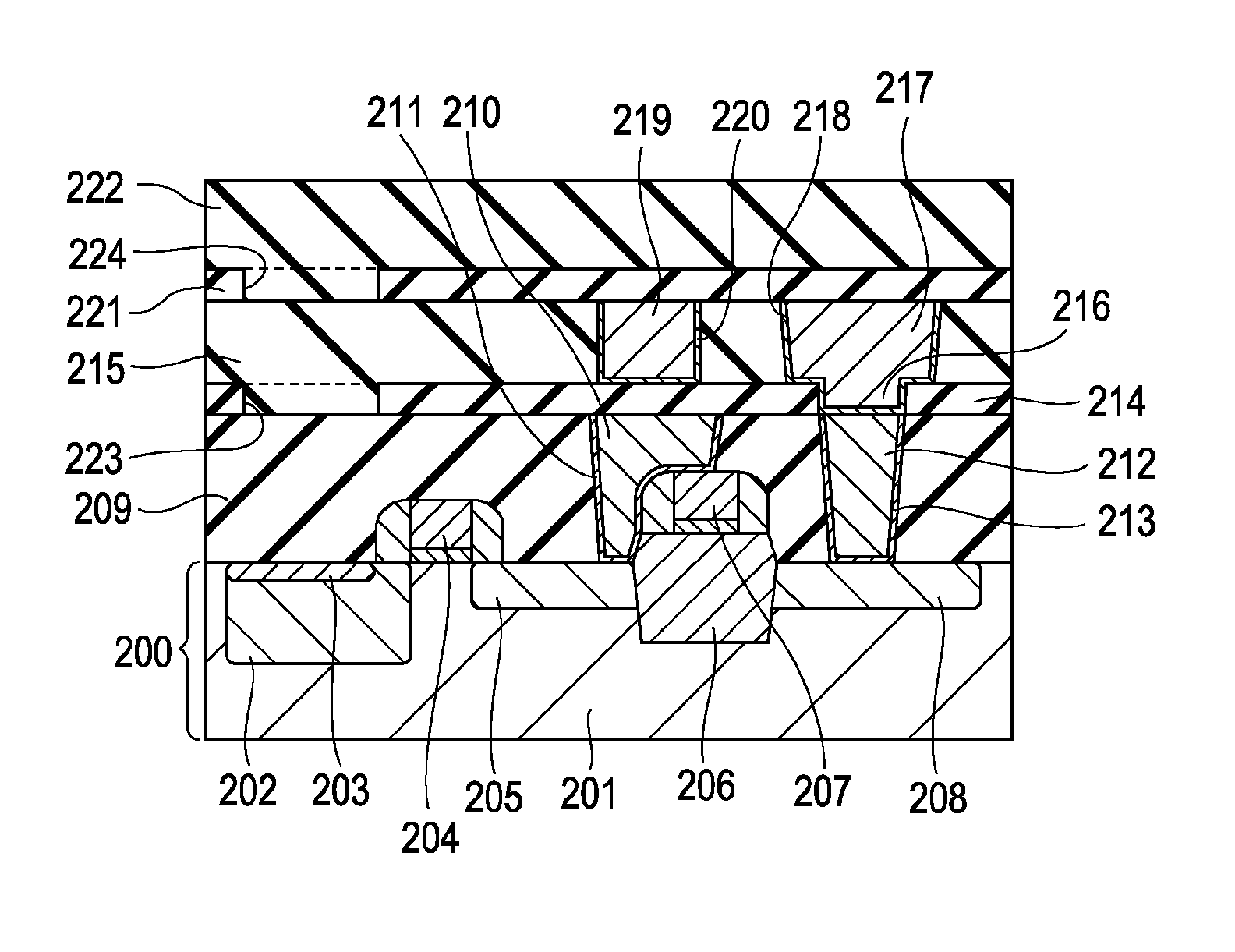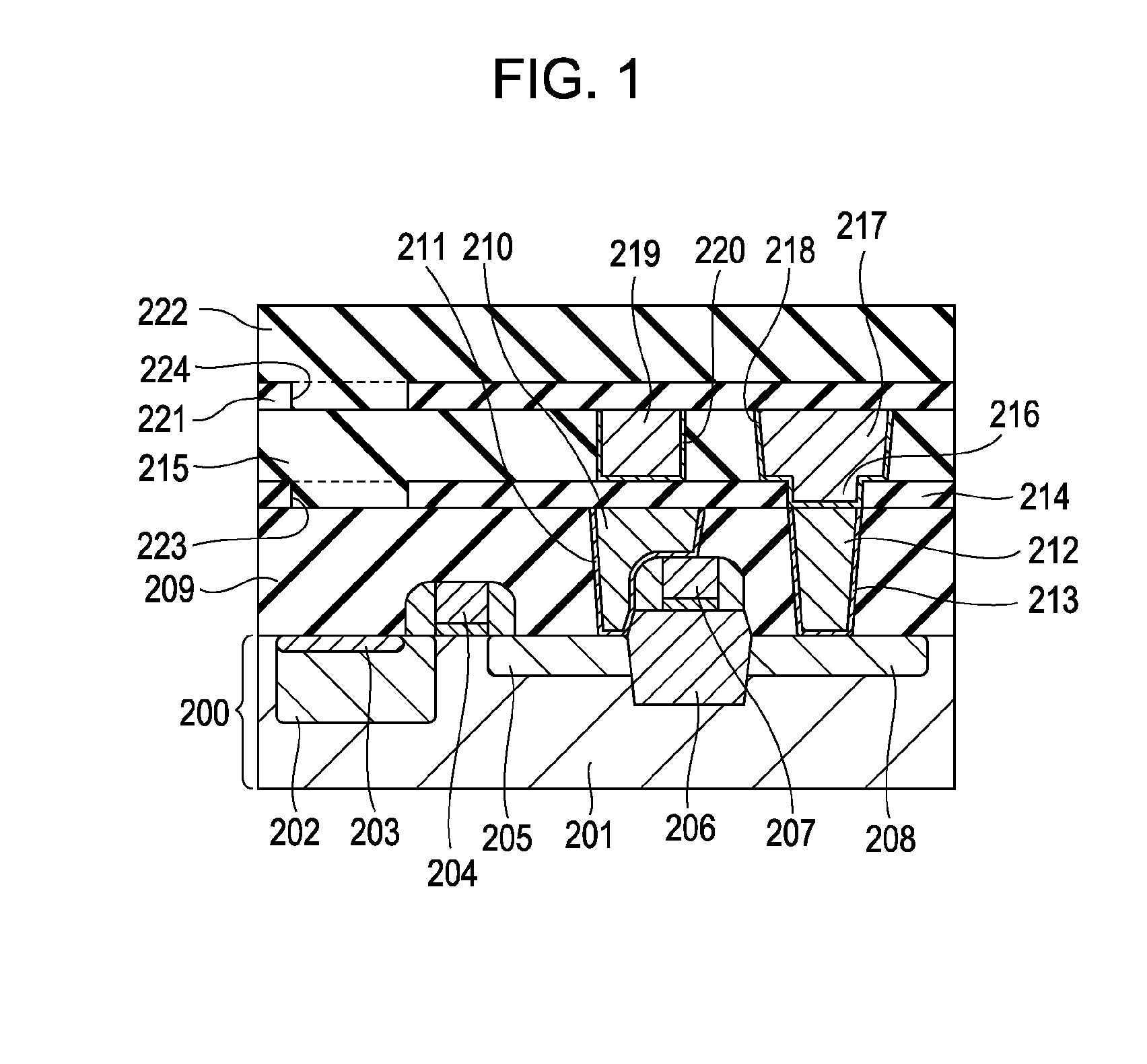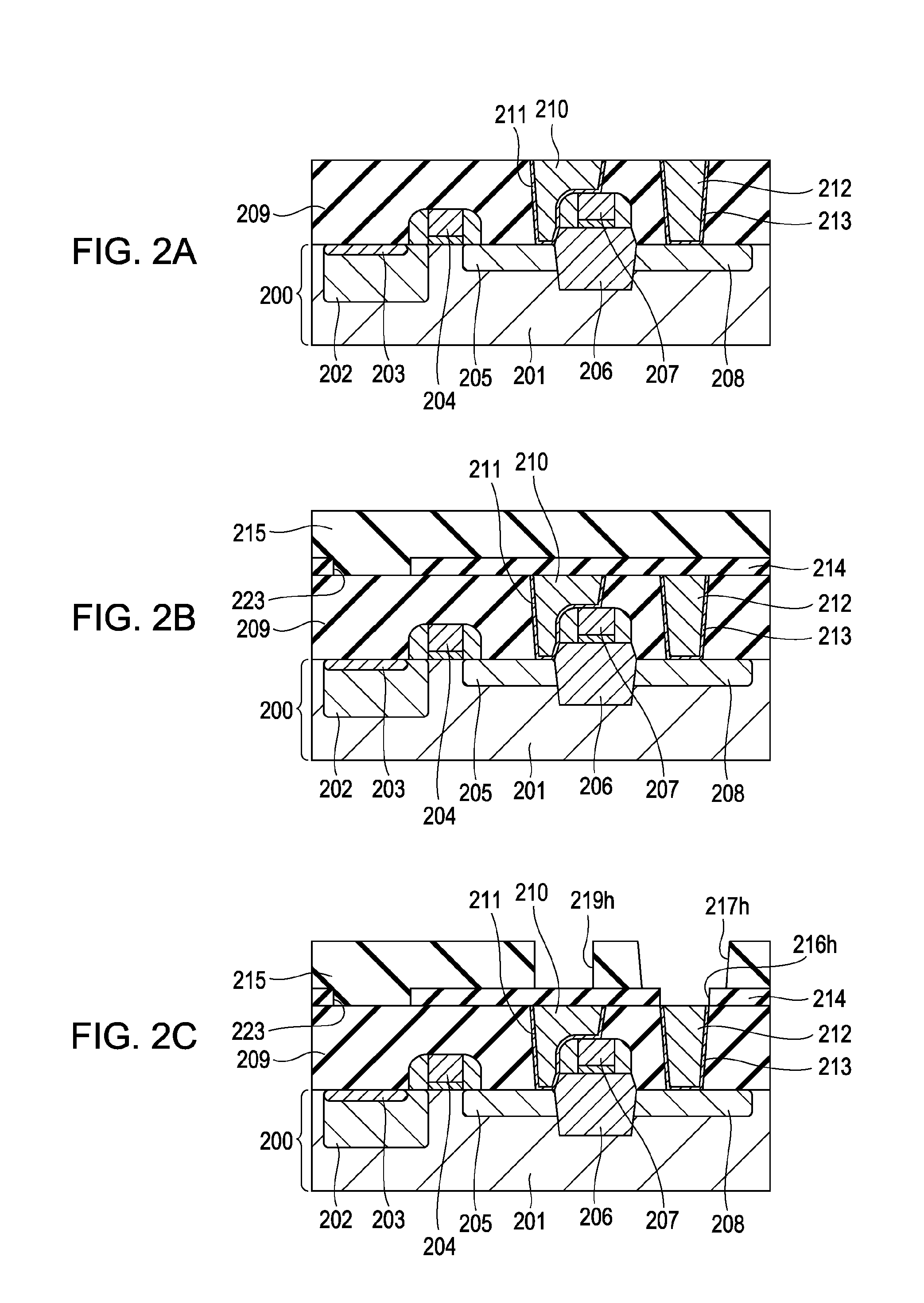Photoelectric conversion device and method for making the same
a conversion device and photoelectric technology, applied in the direction of radio frequency controlled devices, television systems, television system scanning details, etc., can solve the problems of difficult oblique light entering the design flexibility of the wiring layout of the mos-type photoelectric conversion device is further degraded, and the light collection efficiency of the photoelectric conversion element is improved, and the increase in the thickness of the insulating film can be suppressed. , the effect of reducing the design flexibility
- Summary
- Abstract
- Description
- Claims
- Application Information
AI Technical Summary
Benefits of technology
Problems solved by technology
Method used
Image
Examples
first embodiment
[0026]A first embodiment of the present invention is described with reference to FIG. 1. FIG. 1 is a cross-sectional schematic diagram of a pixel portion of a photoelectric conversion device and corresponds to a cross-section taken along a photoelectric conversion element 101 and a transferring MOS transistor 102 in FIG. 4.
[0027]Referring to FIG. 1, a semiconductor region 201 of a first conductivity type is formed in one main surface of a substrate 200. The first-conductivity-type semiconductor region 201 may be a well or the substrate itself. The substrate 200 also has a second-conductivity-type semiconductor region 202 and a first-conductivity-type region 203 covering the second-conductivity-type semiconductor region 202. A photoelectric conversion element is constituted by the first-conductivity-type semiconductor regions 201 and 203 and the second-conductivity-type semiconductor region 202. A gate electrode 204 of a transferring MOS transistor is provided to transfer charges of ...
second embodiment
Application to Imaging System
[0042]In a second embodiment, an example in which the photoelectric conversion device of the first embodiment is applied to an imaging system is described with reference to FIG. 5. An “imaging system” is a digital still camera, a digital video camera, a cellular phone digital camera, or the like.
[0043]FIG. 5 is a diagram showing the structure of a digital still camera. An optical image of a subject is focused on an imaging plane of a photoelectric conversion device 804 by an optical system including a lens 802 and the like. A barrier 801 that serves as a protector for the lens 802 and a main switch can be formed at the outer side of the lens 802. The lens 802 can be provided with a diaphragm 803 for controlling the quantity of light emitted from the lens 802. Imaging signals output via multiple channels from the photoelectric conversion device 804 are subjected to various processes such as correction and clamping in an imaging signal processing circuit 8...
PUM
 Login to View More
Login to View More Abstract
Description
Claims
Application Information
 Login to View More
Login to View More - R&D
- Intellectual Property
- Life Sciences
- Materials
- Tech Scout
- Unparalleled Data Quality
- Higher Quality Content
- 60% Fewer Hallucinations
Browse by: Latest US Patents, China's latest patents, Technical Efficacy Thesaurus, Application Domain, Technology Topic, Popular Technical Reports.
© 2025 PatSnap. All rights reserved.Legal|Privacy policy|Modern Slavery Act Transparency Statement|Sitemap|About US| Contact US: help@patsnap.com



